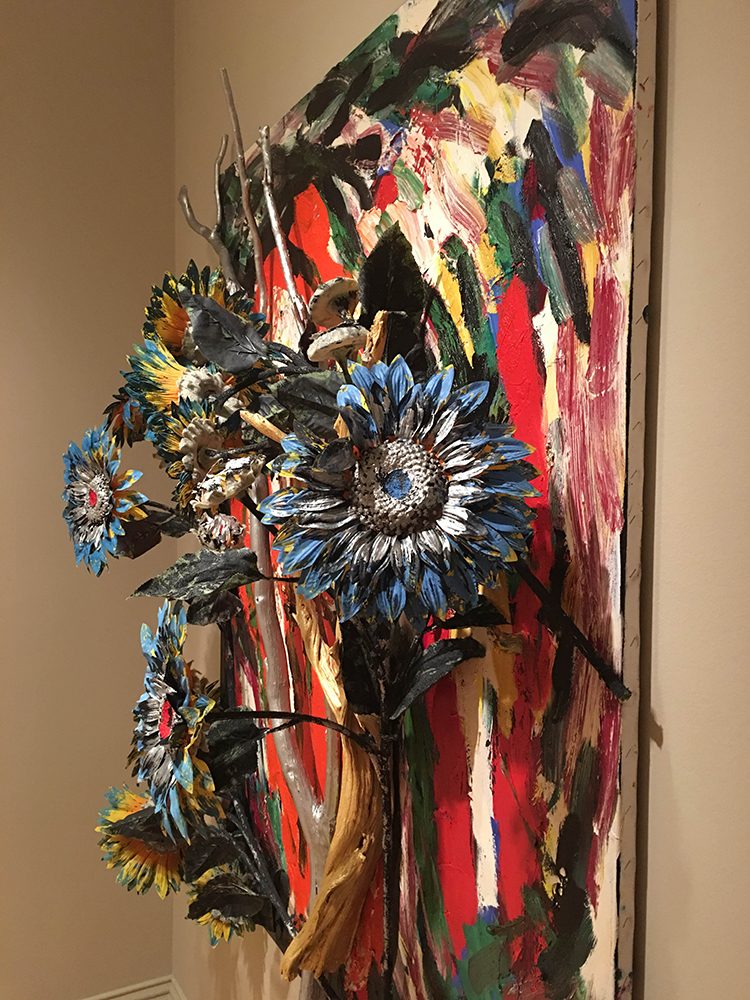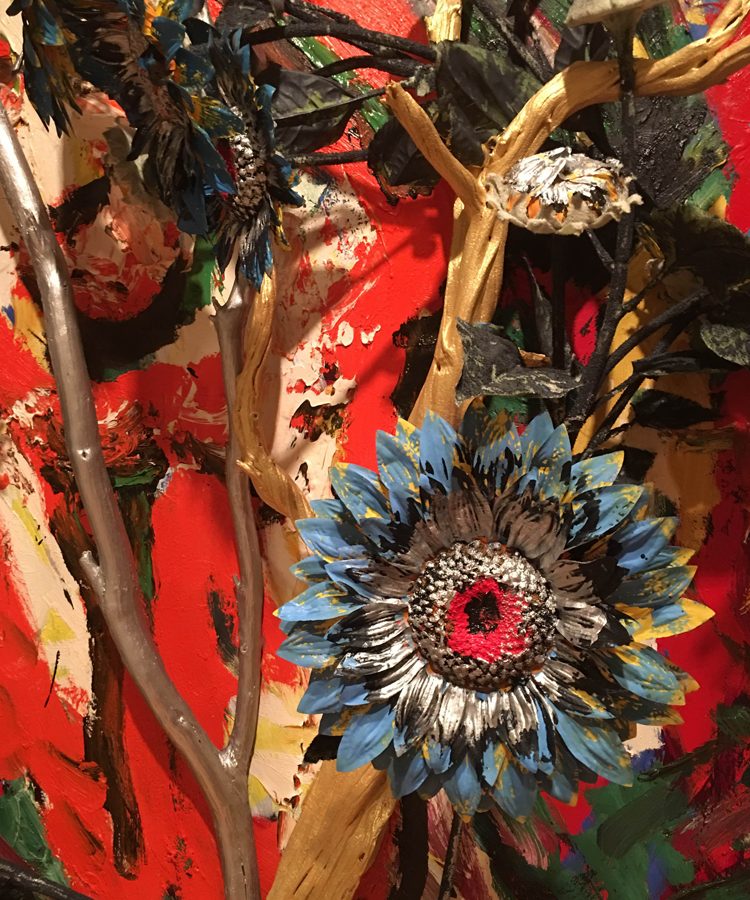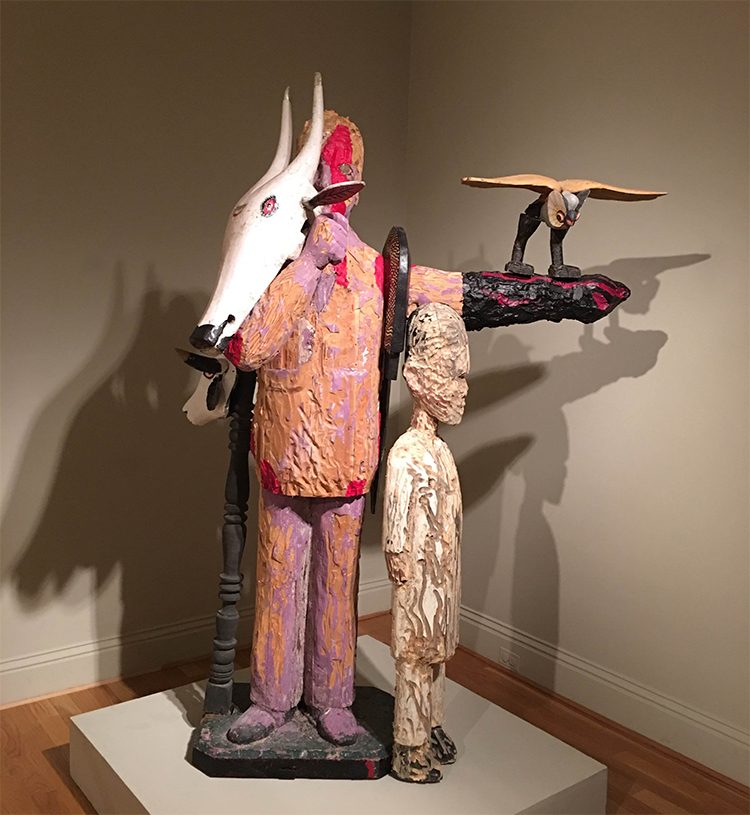Manager of Exhibitions Liza Strelka snapped these photos during the installation of Karel Appel: A Gesture of Color, opening this Saturday.
Tag Archives: flowers
O’Keeffe’s Black Iris VI
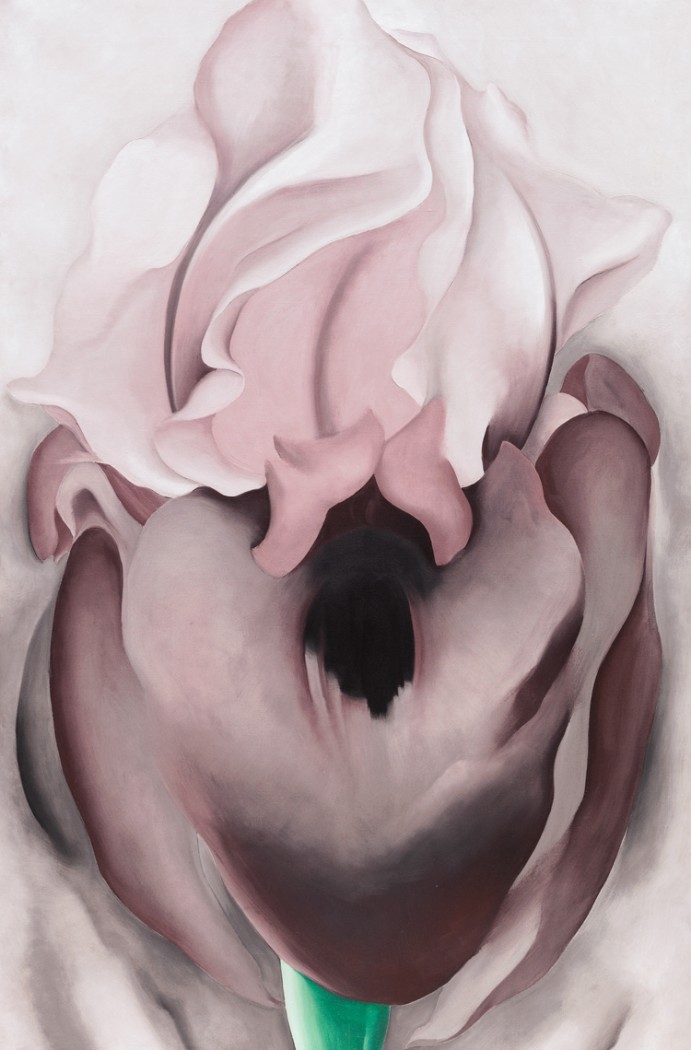
Georgia O’Keeffe, Black Iris VI, 1936. Oil on canvas, 36 x 24 in. Paul G. Allen Family Collection. © 2015 Georgia O’Keeffe Museum / Artists Rights Society (ARS), New York
When we think of landscapes, we often think of sweeping scenes of open fields or sun-drenched canyons. But Georgia O’Keeffe’s Black Iris VI, like many other works on view in Seeing Nature: Landscape Masterworks from the Paul G. Allen Family Collection, approaches nature from a different point of view. This work zooms squarely in on the center of a single open flower.
In the summer of 1936, O’Keeffe was back in her beloved New Mexico, feeling a resurgence of spirit and enjoying her first sustained painting since suffering a nervous breakdown three years earlier. It is a mystery just why the iris appeared among the subjects she painted at Ghost Ranch, outside Santa Fe, though the sculptural petals of this elongated blossom are not unlike the bleached bones she collected. The flower’s black center even appears like the eye sockets of a cow’s skull. Like the skull, the iris has a spiritual presence and is a vessel holding the secret of life and the mystery of death.
Spotlight on Intersection@5: Jeanne Silverthorne
The Phillips celebrates the fifth anniversary of its Intersections contemporary art series with Intersections@5, an exhibition comprising work by 20 of the participating artists. In this blog series, each artist writes about his or her work on view.
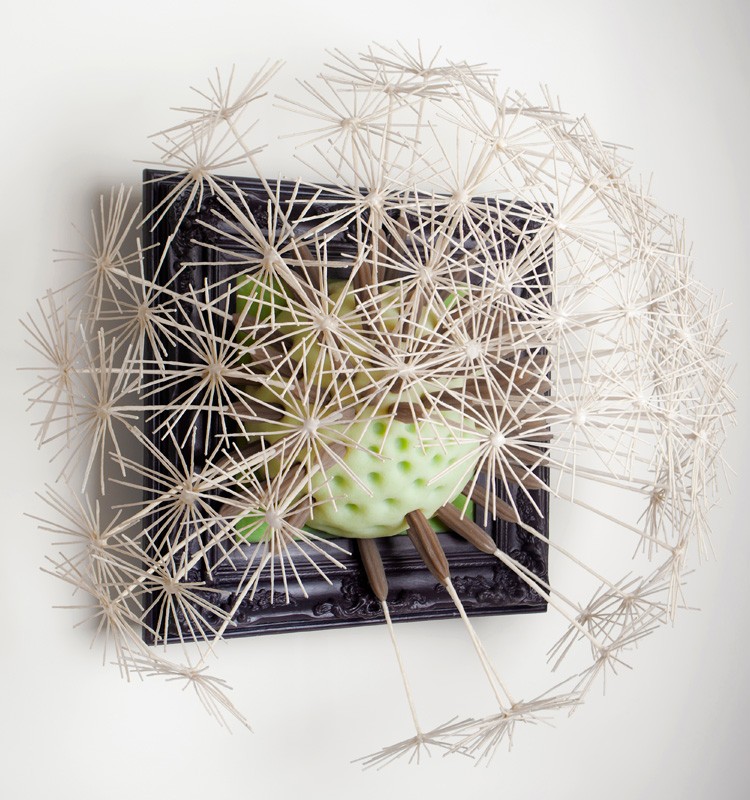
Jeanne Silverthorne, Dandelion Clock, 2012. Platinum silicon rubber, phosphorescent pigment on wire, 33 x 29 x 16 in. The Hereward Lester Cooke Memorial Fund, 2014. The Phillips Collection, Washington, DC
Dandelion Clock is a contemporary vanitas, a reminder of transience and mortality. It is infected by signs of morbid excess (the giant size), decay (the faded or “blown” flower), and toxicity (it glows in the dark). Collapsing under the weight of history and new technologies, traditional studio practice is an excavation of the past, offering an archeology of loss. Flirting with the genre of the floral painting, Dandelion Clock embraces the baroque exuberance and post-modern melancholy of the nearly extinct.
Jeanne Silverthorne

